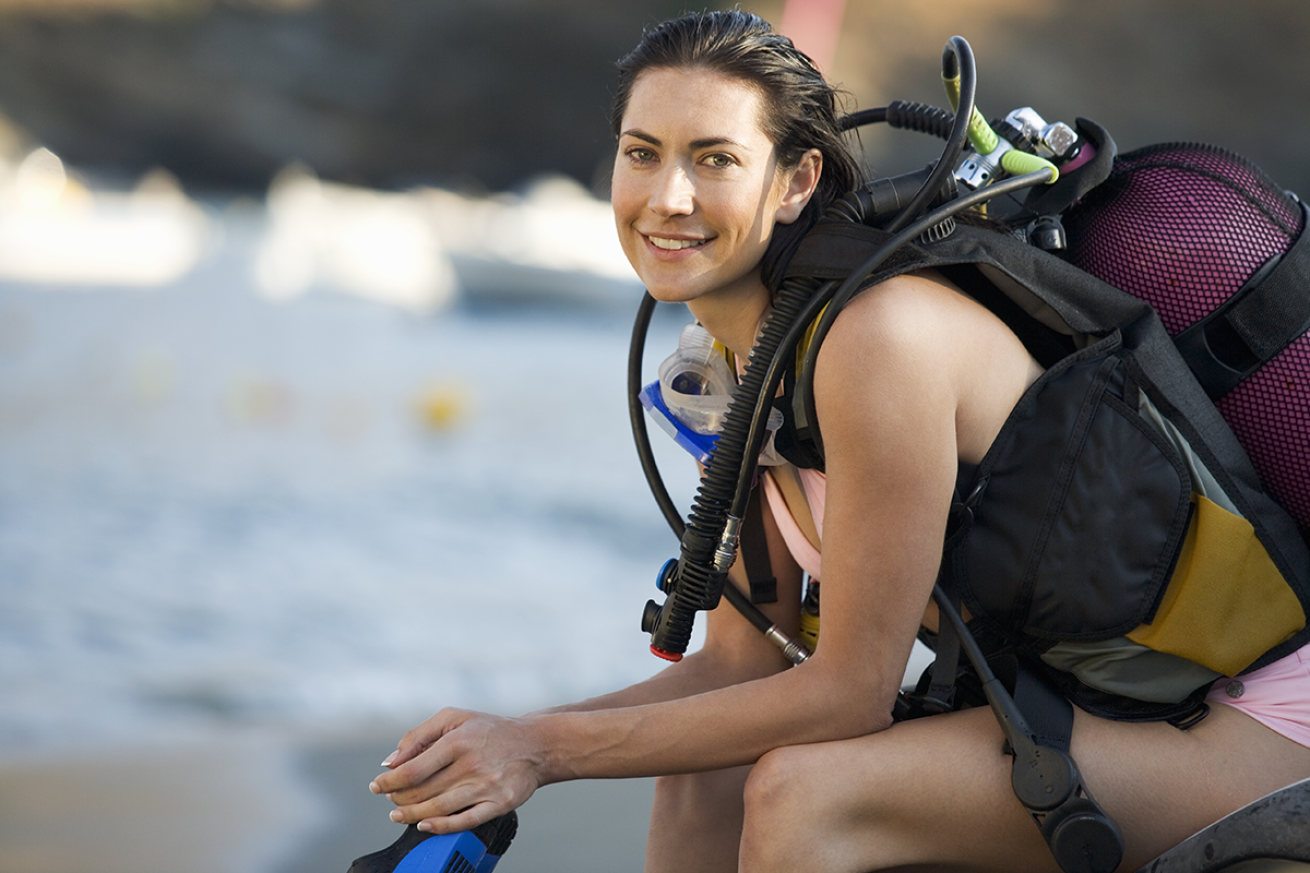Can You Scuba Dive Without a Wetsuit?

Shutterstock.com/Air ImagesThere are safety considerations divers should weigh before sumberging without a wetsuit.
To dive with or without a wetsuit? It’s a question that many dive pros get before a warm water dive. While exposure suits are always recommended for divers, it’s not strictly necessary in every location to wear one.
“It’s up to the person and what they’re comfortable with,” says Kiera Bloom, a PADI Open Water Instructor based in Barbados.
Wetsuits offer divers warmth and protection from cuts, scrapes, sunburns, and stings, which is why diving without a wetsuit presents an added level of risk to the diver. But if you’re thinking about swapping out your wetsuit for a rash guard, take these safety tips to heart and discuss it with a local PADI Pro for site-specific guidance.
Learn the Dive Plan
Ask your divemaster how deep and long the dive will be, and get a sense of the underwater topography. Is the swim-through you’re exploring narrow or lined with sharp corals? Are jellyfish, sea lice, fire coral, lionfish, or other stinging organisms common at the site?
Most dive boats keep vinegar on board as part of their emergency first aid kit, which can help neutralize the stings of organisms like jellyfish and fire coral. But when you’re diving without a wetsuit, it doesn’t hurt to come prepared.
“If you’re absolutely opposed to wearing a full covering, carry vinegar in your gear bag and be liberal with application if you feel even a slight burning sensation during surface intervals,” says Mary Jane Shanks, a PADI Divemaster based in Palau who usually dives in shorts and a rash guard.
Keep Warm and Neutrally Buoyant
Most dive professionals agree that the main risk of diving without a wetsuit is running cold. Ask your dive professional about water temperature at the dive site. Is there a strong thermocline that could quickly sap your body heat? Are you diving on an overcast day that could make it tough to warm up between dives?
“Even in our temperate waters [here in Palau], people do get cold, especially on days where we have multiple dives,” says Shanks.
Bring a few towels and light clothing on board to warm up between dives. Consider packing a wetsuit into your gear bag, just in case—it can come in handy if site conditions change or if you’re making multiple dives.
Many dive professionals strongly recommend getting a handle on your buoyancy before diving sans wetsuit. Buoyancy—defined in diving as the tendency to float, sink, or remain neutral—is among the toughest of skills for new and intermediate divers to master. A wetsuit helps you stay buoyant, so skipping it can present an extra challenge. Maintaining neutral buoyancy can help divers avoid collisions with coral reefs, sea life and other divers, as well as the cuts, scrapes, and stings that often accompany such interactions.
Need help mastering your buoyancy? Enroll in PADI’s Peak Performance Buoyancy course, where you’ll learn how to hover effortlessly (and use less air).
Protect Your Skin from the Sun
Even on the deepest recreational dives, sunburns happen. Wetsuits offer divers excellent protection from the sun—diving without them, or without proper skin protection, increases your risk of a bad burn.
“The sun [in Barbados] is brutal, and you can get sunburned very quickly, especially on the water,” says Bloom. If skipping a wetsuit, wearing “a skin or bodysuit, or even just leggings and a rash guard, is always a good idea.”
A good sunscreen is essential if you’re diving with minimal coverage. Pack a reef-safe mineral sunscreen that’s oxybenzone-, octocrylene-, and octinoxate-free, as these organic compounds can negatively affect corals and marine life. It's worth noting that choosing to wear light exposure clothing, like leggings and rash guards, can sidestep the hassle of finding reef-safe sunscreen.
Finally, don’t forget to protect your skin between dives. If you’re diving in a swimsuit, pack protective clothing to wear during a surface interval.










